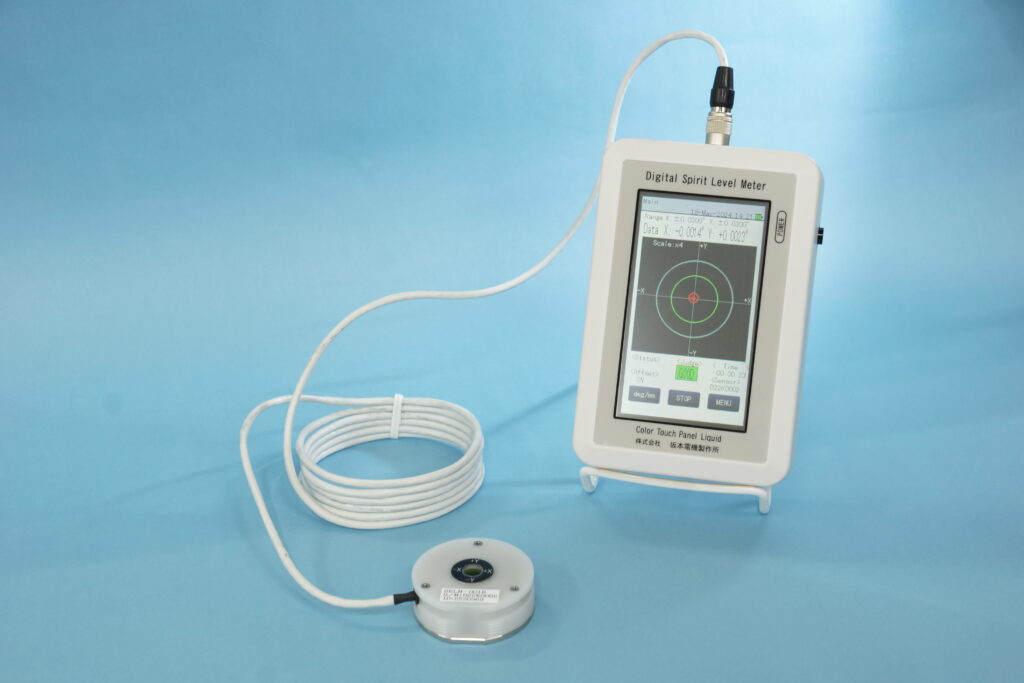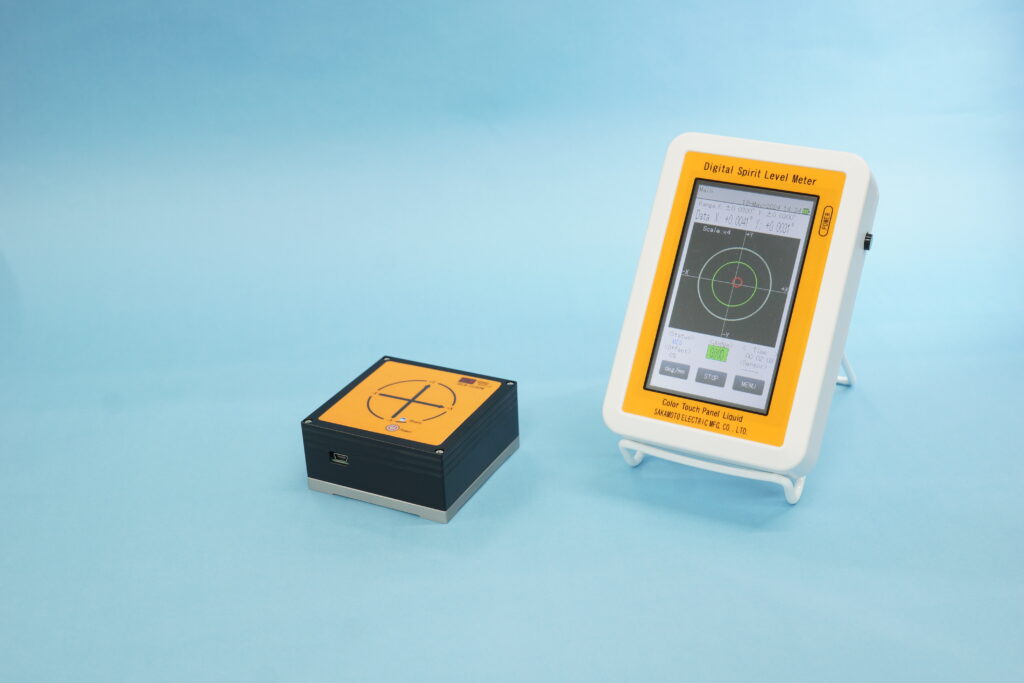Blogs
2025.05.07
How to use Digital Spirit Levels
When you purchase a digital level, an instruction manual is included in the package. However, there are some contents that cannot be fully described in the manual. The following is a step-by-step introduction to the contents that may be helpful when actually using the product.
First, when making precise measurements, turn on the power 30 minutes before use to warm up the electronic circuitry. Since the level is a precision measuring instrument, please be careful not to drop it or otherwise handle it. Avoid pulling on the cable, which could put a strain on the sensor.
If dust is caught between the bottom of the sensor and the measurement surface, it will affect the measurement. Before placing the sensor at the measurement site, wipe the bottom of the sensor with the palm of your hand to remove any debris. Similarly, clean the surface on which the sensor is to be placed. Once the sensor is placed on the surface, slide it slightly to the left or right to move the bubble and wait until the bubble stabilizes. Wait a few minutes for accurate measurement.
Leave the cable extended. Since the sensor is light, the cable can pull on it, which may affect the measurement. Hanging the cable from above is also recommended.
Since the sensor is precise, even the slightest irregularity in the measurement surface will affect the measurement, so it is necessary to set the sensor at the same position for accurate measurement. A positioning jig or similar tool is recommended for reproducible measurement.
The main unit can be configured to set the pass range. If there is a standard angle, it is easy to visually recognize if it is within the standard by setting it on the screen. A buzzer can also be set to sound when the sample is within the set range, so use this function if necessary.
The offset function allows you to register an arbitrary plane and display the angle of deviation from that plane. This function can be used when there is a reference plane or when you want to align multiple tables to the same tilt angle.
When making precise measurements, perform absolute zero correction before use. Generally, a level does not have a zero point, and the zero point shifts depending on the environment of the location, time of day, temperature, and other factors. By correcting the zero point before measurement, precise measurements can be made. Click here for the procedure of absolute zero correction.
After use, store the instrument in the case instead of leaving it out.



